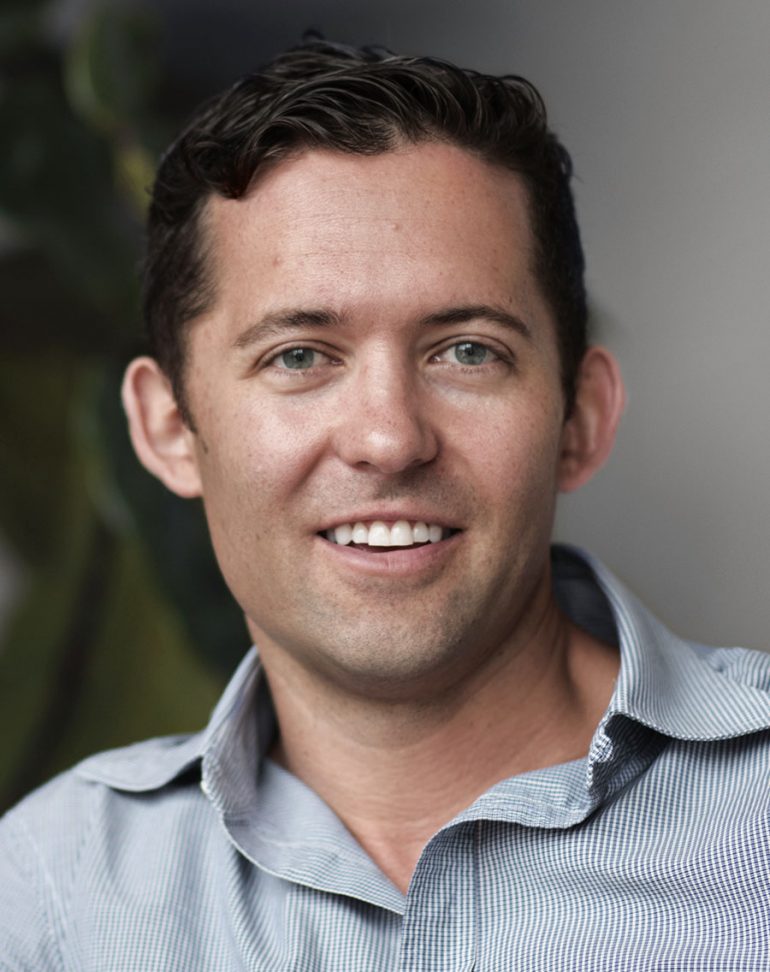Behind every brand delivering a great experience is a leader who recognizes the value of keeping things simple. In Simplifiers, Margaret Molloy, our Global CMO, interviews business leaders who put simplicity to work.
In this Simplifiers interview, Margaret speaks with Jared Cluff, CMO, Blue Apron.
MM: What does Blue Apron stand for?
JC: Our brand stands for helping our customers create incredible home cooking experiences. We strive to deliver on that promise by constantly interrogating whether we’re succeeding against that ambition. Are we delivering meals kits that are genuinely incredible? Are we ensuring that our customers have the tools and information they need to be successful in the kitchen?
MM: What role does simplicity play in delivering on that promise?
JC: Simplicity is integral to our value proposition. We approach reducing complexity in our customers’ lives from a variety of angles. With Blue Apron, our customers no longer need to plan for dinner, spend hours at the grocery store or rack their brains for recipes. By sending the ingredients to their door and developing recipes that are foolproof and turn out restaurant-quality meals, we simplify our customers’ lives.
MM: How does your organization strive to create simple experiences internally?
JC: Invariably as you get bigger, your organization encounters more complexity. It’s tempting to think that you can take on more work that scales linearly to the size of the business. But in fact, you must do the opposite, and ask yourself how the organization can be even more focused on what matters.
We have a clear vision of the company’s brand purpose, mission, and goals, and ladder all activities to that definition of success. We define what success looks like a year or two from now, and what it looks like for specific teams and individuals. By building in frameworks that enhance communication and focus, and clarifying our organization’s purpose and goals, we actively fight complexity.
MM: What frameworks do you use to improve communication and focus?
JC: We use the Objectives and Key Results framework (OKR) to define business objectives and outline what results would serve as evidence of achieving those objectives. By applying the OKR framework at both the company and team level, we create “nesting dolls” within the company. As long as senior leadership is communicating the right objectives for the business, then department leaders and individuals can align their objectives and results back to the overarching company goals in an integrated fashion. By using these frameworks, we build simplicity into the organization at a structural level, which is a powerful way to mobilize the organization.
MM: How do you adhere to these frameworks and goals while retaining the flexibility to adapt to a changing environment?
JC: We’re big believers in defining what success looks like 12 and 18 months into the future, but retaining flexibility around how we get there. This means setting clear quarterly goals. We look at three months and six months with great precision but free ourselves to adapt our approach as we go. If we do that with an unchanging vision of success, we can be successful.
MM: What benefits has Blue Apron experienced from simplifying?
JC: By simplifying, we’ve reduced the scope of the problems we’re working on and winnowed our focus down to key priorities. This focus is a catalyst for creativity. It allows us to unleash far more discovery and out-of-the-box solutions, which leads to better results for the company and our consumers. With a creative group like a marketing organization, it’s really important to give your team the mental bandwidth to explore and think expansively, yet do so against the backdrop of clear priorities.
MM: How do you lead as a simplifier?
JC: I’m clear and direct. With clear communication, I give people a goal to focus on. This focus and structure unleash more creativity from the team, yielding better solutions.
I reinforce these goals in many ways. For example, we write and share hard copies of our objectives across the team and company. The transparency this provides reinforces our team and company goals and gives people the ability to say no when an initiative doesn’t move our goals forward.
MM: What’s the most recent simple customer experience that inspired you?
JC: I’m a recent convert to FoodKick. What I like about FoodKick is that they present me with a highly curated selection of products. This Sunday I went on their site and the entire experience was catered to providing tips for brunch, which is exactly what I need on a Sunday morning. They also provide tremendous convenience—I can get groceries delivered within an hour at almost any time of day.
JC: Come to a shared understanding of what success looks like and align that shared definition of success by using frameworks, like OKR, across teams. Frameworks are great antidotes to complexity because they allow you to build simplicity into the organization at a structural level.
MM: How do you maintain confidence that you’re on the right path?
JC: As a marketer, you have to be constantly innovating. You can’t just winnow back to a few priorities and let those carry you. Instead, you need to also be looking for the next big win by experimenting. We pick experiments that we believe are likely to have a high probability of success and aim to scale those that work. In order to do this continuously, you need to actively manage experimentation.
MM: What’s the biggest mistake leaders make when trying to simplify?
JC: Not simplifying enough. The pressure you face everyday is to do more and grow faster, which makes simplifying a challenge. In order to do it effectively, it’s imperative to make simplifying integral to how you operate and lead.
Qualitatively, you can see you’re on the simplification track if you and your team are able to say no. At Blue Apron we empower each other to say no, defend no and celebrate no. Saying no isn’t typically heralded as a positive thing, but we consider our ability to say no to be important and healthy.
MM: What are the key indicators that simplicity is driving your business?
JC: You know simplification is working for your business when you have a finite set of goals the company is working towards, and people and teams are pulling together in the same direction. Alignment across the business, and the momentum that yields, is symptomatic of simplicity.
MM: What does simplicity mean to you?
JC: Simplicity is about focus. I’m a big believer in the 80/20 rule—if we ruthlessly prioritize and dedicate our time to only those things that matter, we’ll have the greatest impact.
MM: How do you reconcile the inherent tension between simplifying and the fear of missing out?
JC: Simplifying doesn’t mean being boring, close-minded or routinized; it’s about doing fewer things well. You can do a few things for a year or two, and then do a completely different set of other things. In order to properly simplify, you must stay open-minded and curious in an effort to find the next big thing.
MM: What’s the top piece of advice you’d give to other brands trying to simplify?
JC: Know your brand purpose, clearly communicate it across the organization and ensure everyone is aligned around it. Your brand purpose is a vehicle for simplification.
MM: Thank you, Jared.
This is this an ongoing Simplifiers series. See interviews with SVP, Global Brand Management at American Express, Clayton Ruebensaal; EVP and Group President at Verizon Wireless, Ronan Dunne, Director of Strategy and Innovation at Cofra Holding Ltd, former CEO of C&A China, Lawrence Brenninkmeyer; CMO at The Recording Academy, Evan Greene; CMO at Mary Kay, Sheryl Adkins-Green; Head of Marketing at Home Centre, Rohit Singh Bhatia; SVP, CMO of Aflac, Gail Galuppo; SVP and CMO at Cambia Health Solutions, Carol Kruse, Managing Director of The Nature Conservancy, Geof Rochester, Chief Strategy and Innovation Officer of Motorola Solutions, Eduardo Conrado, EVP; SVP, Chief Marketing & External Affairs Officer at Abbott, Elaine Leavenworth, GE CMO, Linda Boff; McLaren Automotive Head of Brand Marketing, Stephen Lambert; Ascension Chief Marketing and Communications Officer, Nick Ragone; Hertz CMO, Matt Jauchius; Direct Line Group Marketing Director, Mark Evans; McDonald’s CMO, Deborah Wahl; Jet.com President, Liza Landsman and VP Marketing, Sumaiya Balbale; Target CMO, Jeff Jones; Spotify CMO, Seth Farbman; Ally Financial CMO, Andrea Riley; Gannett CMO, Andy Yost; CVS Health CMO, Norman De Greve; Dunkin’ Brands CMO, John Costello; Zappos CEO, Tony Hsieh; Southwest Airlines CMO, Kevin Krone; and Google CMO, Lorraine Twohill.
Know a simplifier or would like to be included in the series? Please recommend an executive for my next interview: [email protected]
Margaret Molloy is Global CMO and head of business development at Siegel+Gale. Follow her on Twitter: @MargaretMolloy and Instagram: @MargaretMMolloy


